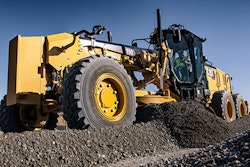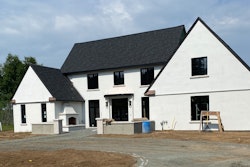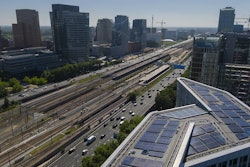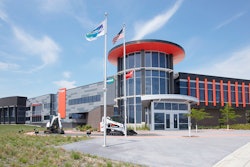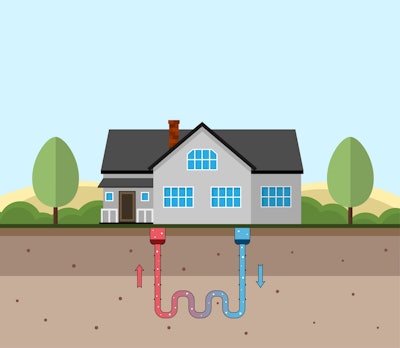
The U.S. is experiencing a significant housing shortage. It’s estimated that the current housing stock shortfall approaches 4 million homes, a 1.3 million increase since 2018.
Zillow’s most recent housing market report found that inventory is down 40 percent from pre-COVID levels. The online real estate marketplace expects new listings to move quickly, many above the asking price. For builders, buyers, and the environment, the repercussions of this moment will be widespread and far-reaching.
While price considerations and general availability are often top of mind, this moment also presents an opportunity to rethink how we build homes. By outfitting millions of people with more efficient and effective energy sources than existing homes powered by natural gas, heating fuel, or other sources, we can improve climate change outcomes while producing more valuable and efficient homes.
More specifically, geothermal is the most efficient heating and cooling option for new construction, and now is the best time ever for it to be specified. Here’s why.
Traditional Energy Use Has Climate Implications
When new home builders install natural gas infrastructure, they are outfitting homes with greenhouse gas emitting appliances and temperature control systems with lifespans lasting two decades or more.
This has climate implications that builders can’t ignore. While more than a dozen U.S. cities have banned natural gas installations in new homes, it remains the default energy source for many builders and buyers.
However, when we equip homes with electric-powered appliances and heating and cooling solutions, we are advancing sustainable climate change initiatives that are good for builders, buyers, and the environment. It’s a rare win-win-win in an industry often marked by compromise.
Notably, many home buyers are placing a premium on more eco-friendly and cost-effective building methodologies, recognizing that the climate change and long-term cost repercussions are in their favor.
According to the U.S. Department of Energy, geothermal heat pumps can reduce energy use and emissions by 30%-60%, control humidity, are sturdy and reliable, and fit in a wide variety of homes.” As Ian Bogost wrote in The Atlantic, “Getting a heat pump is one of the easiest ways for homeowners to fight climate change.”
Retrofitting existing homes with geothermal heat pumps can improve climate outcomes, but new construction poses an unprecedented opportunity to rethink building norms in light of climate change realities.
Tax Credits Enhance Profitability & Future Planning
Federal tax incentives make geothermal a profitable home heating and cooling solution for new builds. We’ve seen this work before. Federal tax incentives made solar panels more affordable. The U.S. residential solar market is soaring where growing demand meets financial incentives that make a green transition feasible.
Today, the Investment Tax Credit (ITC) and federal residential solar energy credit allow homeowners to claim a 26 percent tax credit for systems installed in 2022 and a 22 percent dedication for systems installed in 2023.
What’s more, with more companies coming online with design-build expertise, it’s more feasible to determine the best ground loop placement with vertically integrated system designs. As more companies emerge, production scale and product accessibility will further drive down costs.
At the same time, developing localized integrations that optimize system sizes to account for local geology and other factors will further enhance future planning, making geothermal more economical and impactful than ever.
When coupled with local tax incentives, geothermal can enhance profitability while helping homeowners future-proof their homes with more sustainable energy solutions.
Geothermal Makes Homes Healthier
Geothermal heating and cooling improves indoor air quality, creating healthier, more sustainable homes. Notably, burning natural gas produces pollutants that can contribute to or exacerbate respiratory illnesses.
As Josiah Kephart, an environmental epidemiologist at Drexel University, told NPR, “When you have a gas stove, that combustion is actually occurring right in your kitchen — you can see the blue flame down there. There is no smoke-free combustion.” This is true for furnace appliances as well, which more frequently and ferociously pollute in-home air quality.
In contrast, heat pumps are quiet, and they don’t produce flames, fumes, or odors. For a generation of living environment and eco-conscious buyers, this can be a differentiating upsell that reduces overall construction costs but enhances the buyer experience and builder profitability.
Simply put, geothermal presents an opportunity to make new homes healthier for decades, improving lives without compromising functionality.
A Change Worth Making
As construction professionals make decisions today about the materials and processes that will impact new home construction methodologies, their choices have implications that will reverberate for years to come.
Geothermal heating and cooling is just one way that builders can improve outcomes for their bottom-line and potential buyers, but it’s a meaningful change worth considering today.





